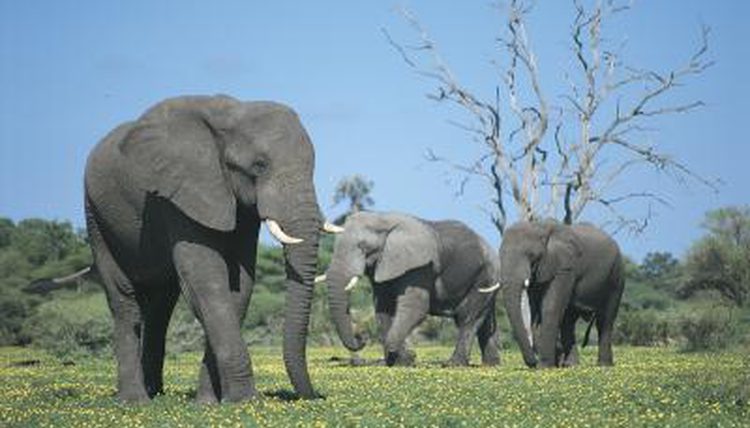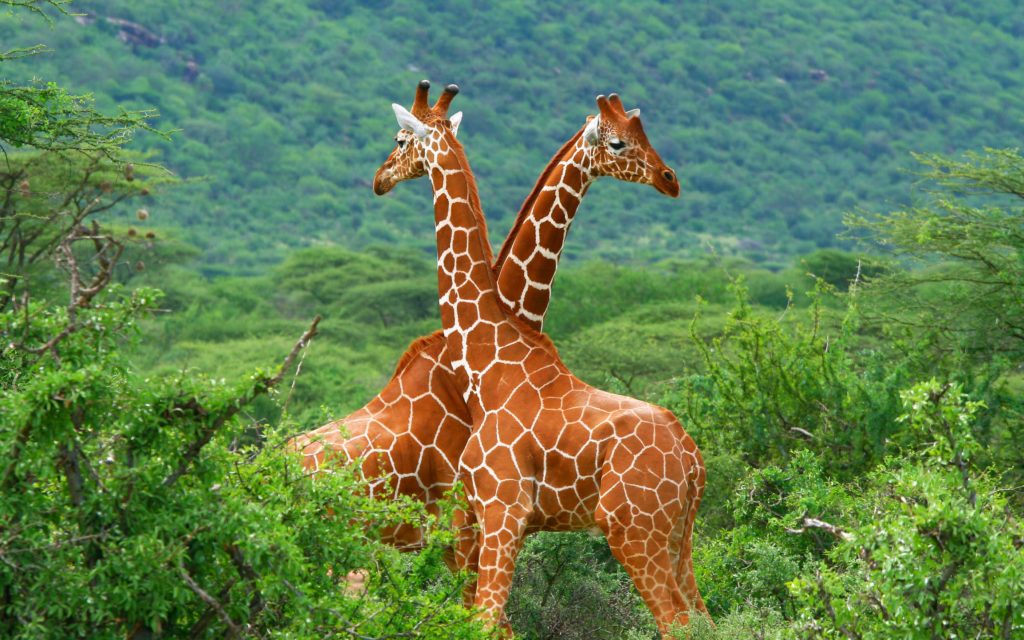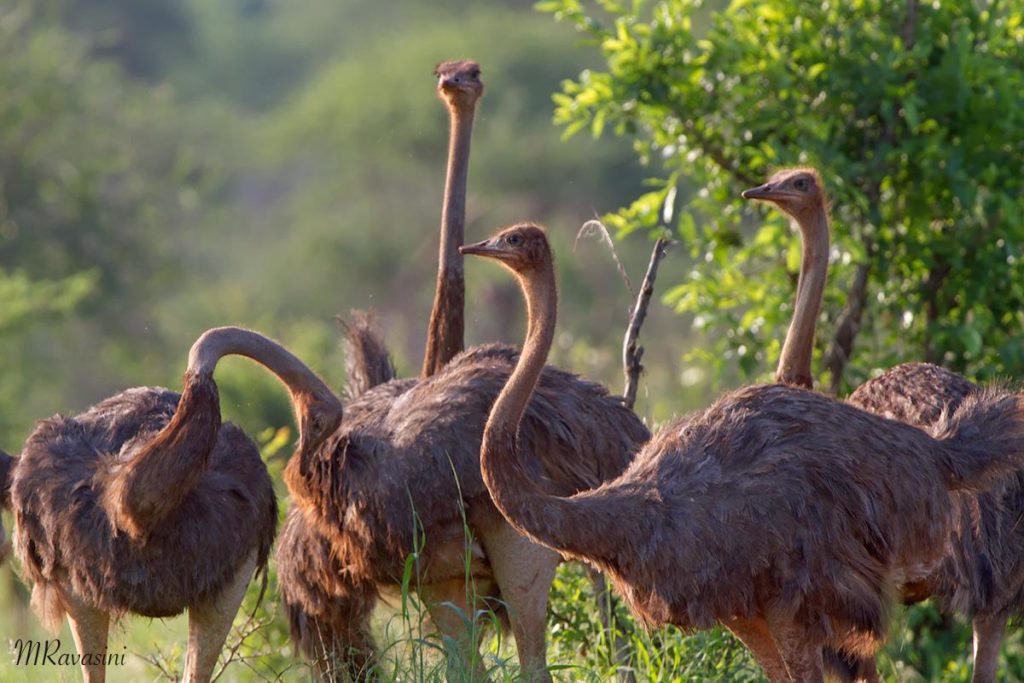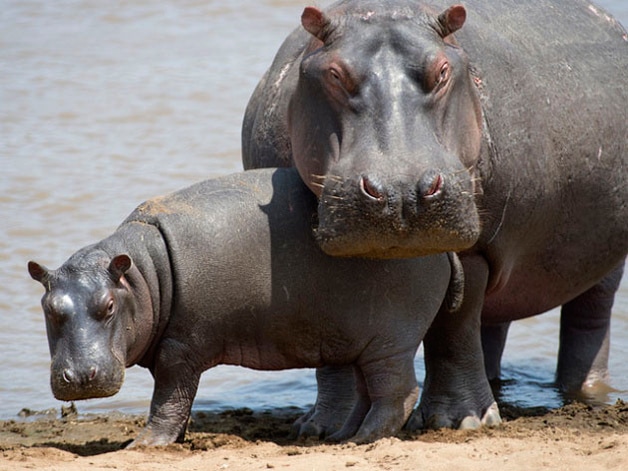Somalia, in eastern Africa, has a coastline shaped much like the horn of a rhinoceros. For this reason, the area has been dubbed “the horn of Africa.” The country is mostly made up of plateaus and grassy savannas that are home to some of the largest animal species on Earth.
Elephant

The African bush elephant is the largest land animal currently living on Earth, weighing in between 7,000 and 13,200 pounds. Everything in the elephant’s life is bigger—he will eat 300 pounds of grass and drink up to 50 gallons of water per day. Females have the longest gestation period of any animal, lasting two years. The bush elephant has tusks that curve outward, and each tusk can reach 8 feet in length and weigh between 50 and 100 pounds. The elephant is a very intelligent and sensitive creature, and very social, living in large matriarchal herds. These creatures have been observed showing love and affection, and even grieving for lost family members. In the wild, the elephant will live 60 to 70 years and has no natural predators. Humans are the biggest threat to the continued existence of the elephant. Habitat loss is a major issue, and although it was outlawed worldwide in 1989, elephants continue to die at the hands of ivory poachers.
Somali/Reticulated Giraffe

If the bush elephant is Somalia’s heaviest mammal, the Somali giraffe is its tallest. Also known as the Masai giraffe or reticulated giraffe, he can stand as tall as 18 feet and weigh as much as 4,250 pounds. His neck alone can be 8 feet long and weigh 500 pounds. Amazingly, the Somali giraffe has the same number of vertebrae in his neck as a human. He is the type of giraffe most often found in zoos, so there’s a good chance you’ve seen one close up. He can be identified by large, liver-coloured markings on a cream-coloured background, with the pattern extending down the legs. The Somali giraffe will eat up to 75 pounds of leaves, twigs, and bark a day mainly from the acacia tree. He needs to drink only once every few days, but when he does, he will take in up to 12 gallons of water at one time. During the rainy season when his food has a high moisture content, he can go for weeks without drinking.
Somali Ostrich

The ostrich, the world’s largest bird, is now found in the wild only in Africa. This flightless bird can run at speeds of over 40 miles per hour—faster than a horse—and can outrun most predators. One kick from an ostrich can kill a lion. He eats mostly plants, but will also eat insects and sometimes lizards. He stands up to 10 feet tall and weighs up to 400 pounds, making him the world’s heaviest bird. An ostrich egg weighs 3 pounds and is 6 inches long, making it the largest of any bird egg. It is the equivalent of two dozen chicken eggs. The ostrich is social, living in flocks of 10 to 100 birds with a dominant male and a dominant hen. He will live 30 to 40 years, and sometimes more than 50.
Hippopotamus

Perhaps Somalia’s most threatened animal is the hippopotamus. His population has been in steady decline from ivory poachers and from habitat loss. The hippopotamus will spend 16 hours per day submerged in water to cool himself from the hot African sun. At sunset he will walk 5 to 6 miles foraging for food. Each night the hippo will consume 80 pounds of grasses to sustain his 5,000- to 8,000-pound body. Despite their ungainly bodies, hippos are graceful in the water and can swim well. Baby hippos can close their ears and nostrils, allowing them to nurse either on land or underwater.